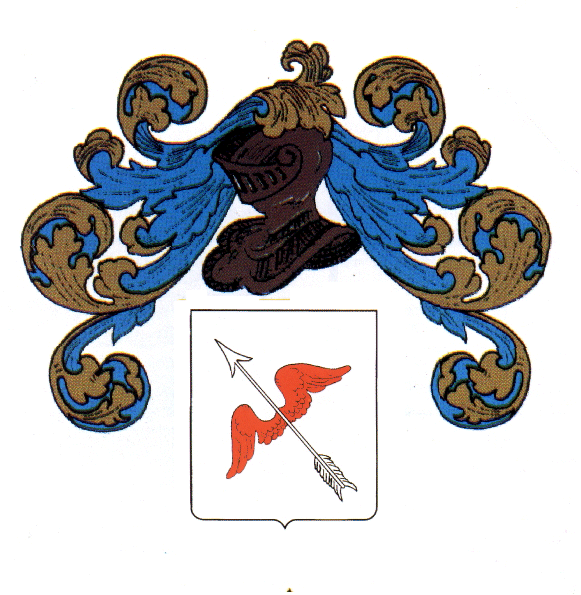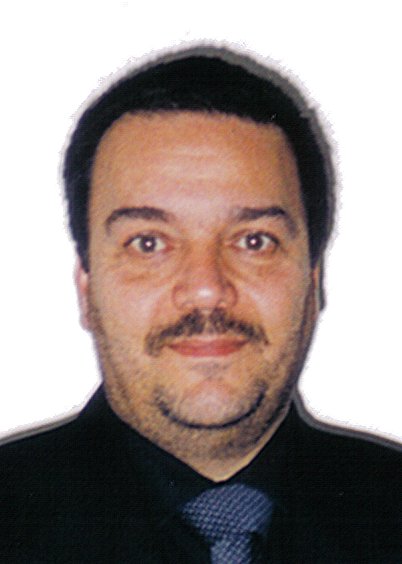VENTURA FAMILY TREE

The true origin of the
surname VENTURA are still not determined. The VENTURA family line appears to traces its ancestral roots
to the
ancient territories of Italy between the 11th
and 12th centuries, and the family held lands and estates in
Italy. The family was
also allied to other influential feudal families. While the surname is
generally interpreted as representing "good fortune", it has been
suggested that the family may have been originally of Jewish origin -
the
surname originating from the name “Ben
Torah” (son of the Law).
The
surname VENTURA is very common
in Italy today, where it
can have the form Venturi, Venturella,
Venturelli, Venturin, Venturino,
and Bonaventura. The first reference
to the VENTURA family occurs in
1299 in the City of Salerno (Naples, South of Italy) where it is included among the
feudal noble
families of the region. It obtained possession of various feudal
holdings and
extended its influence to the Otranto region, including Morice and
Polmerice
during the time of John II. It built links through marriage with
various noble
Siabiese families. Later, this family moved to Bari, Taranto and Trani (South-east
of Italy) where it’s members had
responsibilities in the
city. Members of the VENTURA family were accepted
as suitable to join the Order of St. John of Malta .
A number of Italian medieval member of the VENTURA family has been identified.
There was a Roberto VENTURA,
baron of Casanova, who was a Foreign Minister of Charles I. The
ecclesiastic
records report the birth of a Guiseppe VENTURA in Venice in 1565;
the baptism of a Grazia VENTURA
in the parish of
Saint Nicholas of Strada of Caserta in 1637;
and of a Giovanni VENTURA in the St
Lawrence of Genoa .
The VENTURA family has also
Spanish-Portuguese links and may have originated from that region,
though it
appears more likely that they extended their influence there later. The
ecclesiastic records report the baptism of a VENTURA
in the parish San Gil and Holy Ana of Granada on the 7th
December 1550; the marriage of Eufracia
VENTURA on the 7th August 1586 in Azagra (Navarre); the baptism of Gabriela
VENTURA on the 3rd
May 1595 in the parish of San Pedro of Abrera of Barcelona; and the
marriage of
Angela
VENTURA in Holy Maria Falces of Navarre on the 15th
November
1645. It is said also that the surname VENTURA comes from Navarre and more
particularly from Ejea de los Caballeros (Province of Teruel). The surname VENTURA is mentioned in
the Real Chancillería of Valladolid
(in which there remain the processes of
nobility of the Kingdom of Castile, correspondents
to the populations living in the
north of the river Tagus in the years
between 1488 and 1834). It is also
mentioned in the Real Chancillería of
Granada (populations living in the
south of the river Tagus) and in the Real
Audencia of Aragon (index of the
Processes of Nobility preserved in the historical file of the Royal
Audience of
Aragon) .
The crest in use in
Malta is based on 1. a
red winged arrow centred in a white
shield .
Other crest used include :
2: Crest: Of
silver, nine cakes of
azure, placed by three in three.
3: Of silver, a lion rampant, of
orange,. Border of orange with eight scallop, of silver.
4: Of green, a small
golden shield, with a
lion, crowned, of purple.
5:Of gold, five
biscuits of mouths, placed in
long necklace. Of silver, four strips of mouths and overcoat a whole
disc
roulette of silver with arrow, which concerns its top, a head of
Moorish king
and to the subordinate, a bird, quite of course.
6: Of gold with dark blue
bands; dark blue
double headed bird and three blue pyramids.
7. A shield with a
red background overlain by a gold
Fleur de Lys.
In Malta, the first
person bearing the surname VENTURA has been to date
traced to the sixteenth century at the time of the Great Siege in 1565.
A Fra
Vincenzo VENTURA served as a lieutenant to Fra Vincenzo
Anastagi who
was one of the six knights entrusted by Grandmaster La Valette to
reconnoitre
the island and to follow the movements of the Turkish fleet and army.
Fra
Anastagi sent Fra Ventura from Mdina to spy on the enemy's movements,
during
which excursion he captured the previously defected French fife-player
who had
revealed military secrets to the Turkish general .
In March 1617, the
glove-maker Gioanne VENTURA arrived to
Malta from Lorraine to set up
business in Malta. The records of
the Order of St. John of Jerusalem record the
existence of a Francesco VENTURA. On the 2nd November 1703, he was recorded as being
given a concession "di supersessoria"
for two years .
Francesco also features in the manuscript volumes of the "Spogli"
dated 1723. These consisted
in the produce of all the personal effects of a knight at his death, if
he was
untested, and no trace of his will, or testament, had been found. It
transpires
that Francesco had been admitted to the Langue of Castille &
Portugal .
During the eighteenth
century mention is also made of the surgeon Angelo
VENTURA who was
recorded to be practising in Valletta, caring for a
number of sick knights and also attended for GrandMaster de Rohan in
1794. In 1778 he was employed as a surgeon at the Sacra Infermeria and
chief surgeon at the Casette delle Donne. By 1797, he was serving as
chief surgeon at the Sacra Infermeria. He
was subsequently employed as Senior Surgeon on 1st September 1798 at the Civil Hospital under the French
receiving an annual salary of 480 scudi; and in 1805 in the Man’s
Hospital at Valletta .
The surname VENTURA appears in the Status
Animarum 1679-1833 of Vittoriosa .
In 1754, the Status Animarum records
that Giuseppe
VENTURA aged 71 years [born ~1683] and his spouse Antonia VENTURA aged 41
years [born ~1713] were inhabitants of Fort Ricasoli [Room 34].
In
Malta,
the present VENTURA
family line has been to date traced to the late
eighteenth century Giovanni VENTURA
who may have been a descendant of Giuseppe
VENTURA [12]
L. Zahra: Mill-Istatus Animarum dwar l-Belt Vittoriosa. Pronostku Malti. Almanak ta' Malta u Ghawdex.
G. Muscat & Co. Ltd., Malta,
1990, p.215
Ventura Family tree in Malta

 1.
1. 2.
2. 3.
3. 4.
4. 6.
6.






